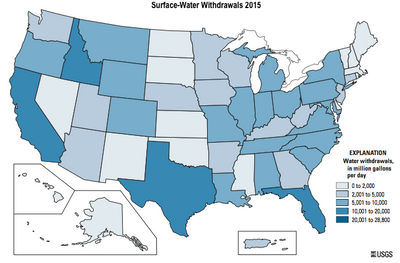Analies Dyjak | Policy Nerd
Our blog has been following PFAS contaminants such as the GenX chemical for months now, often reporting on new developments before mainstream news.
Today marks an important milestone: EPA has released a draft toxicity profile for GenX. This long-awaited toxicity report contains critical information for many states who have been seeking answers on this harmful contaminant.
EPA’s Draft Toxicity Assessments for GenX and PFBS:
EPA determined a candidate Chronic Reference Dose of 0.00008 mg/kg-day. A reference dose is the daily oral intake not anticipated to cause negative health effects over a lifetime. A reference dose is not a carcinogenic risk factor, however, EPA states that the toxicity data for GenX are “suggestive of cancer.” According to the draft report, oral exposure in animals had negative health effects on the kidney, blood, immune system, developing fetus, and liver. The draft toxicity report also provided information on PFBS, which is a replacement chemical for PFOS. The candidate Chronic Reference Dose for PFBS is 0.01 mg/kg-day, and there was insufficient data to determine its carcinogenic potential.
What Is GenX?
GenX is part of a category of contaminants called PFAS, or per and polyfluoroalkyl substances. The GenX chemical linked to cancer has gained national attention since being discovered in the Cape Fear River in June of 2017.
PFAS have historically been used in consumer products like Scotchgard, Gore-Tex, Teflon, and even the inside of popcorn bags. PFAS are also used in firefighting foam, which is the major source of its pollution in waterways across the country.
Background:
The Chemours plant in Fayetteville, North Carolina produces refrigerants, ion exchange membranes, and other fluoroproducts. They have been discharging liquid effluent into the Cape Fear River for years, which has contaminated drinking water for the entire area. GenX is the replacement chemical for PFOA. After PFOA was discovered to be toxic, manufacturers addressed the issue by making an equally-as toxic replacement. Manufacturers of PFAS have been doing this for years, which is why there are so many different variations present in the environment.
Is GenX Federally Regulated By EPA?
No. This means that municipalities are not required to test for PFBS or GenX in water. Additionally, this draft toxicity level is not a lifetime health advisory level, which states would be more inclined to follow.
When Will A Drinking Water Standard Be Determined?
Don’t hold your breath on anytime soon! The regulatory process can take decades, especially for such a persistent contaminant in the environment. This is more than enough time for adverse health effects to set in, and we recommend consumers do everything they can to learn about their water and protect themselves, rather than wait for the government to step in.
What Does This Mean For Me?
EPA is in the very early stages of determining a regulation or even health advisory for GenX. This draft toxicity level needs to go through public comment so that states, tribes, and municipalities can offer input and recommendations. If you want to see third-party data on filters that remove GenX in water and other PFAS, click HERE.
Other Articles About GenX:Timeline: GenX In North Carolina
ASTDR Toxicological Profile for PFAS
GenX Contamination In Drinking Water: What You Need To Know







